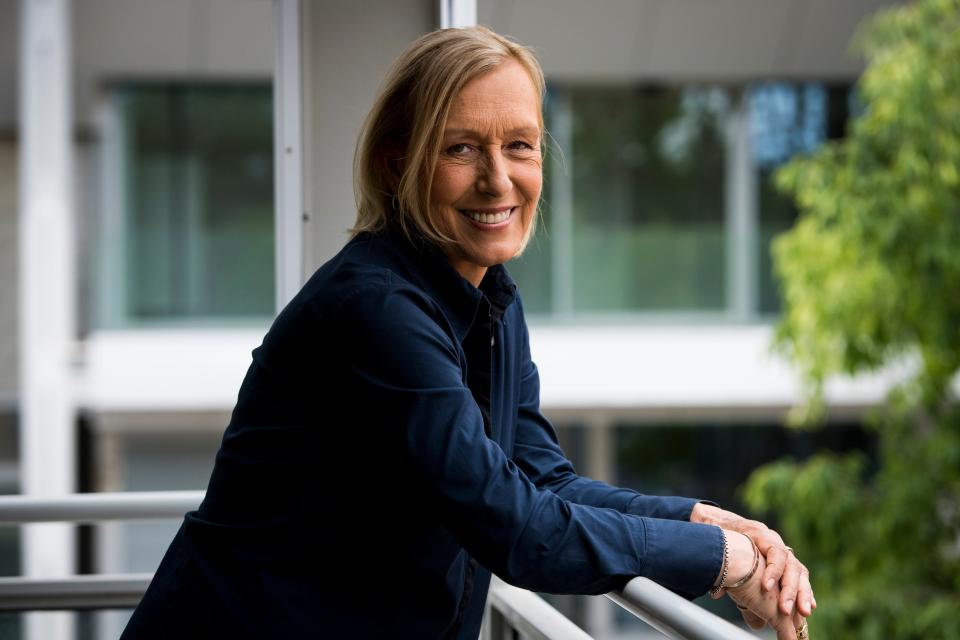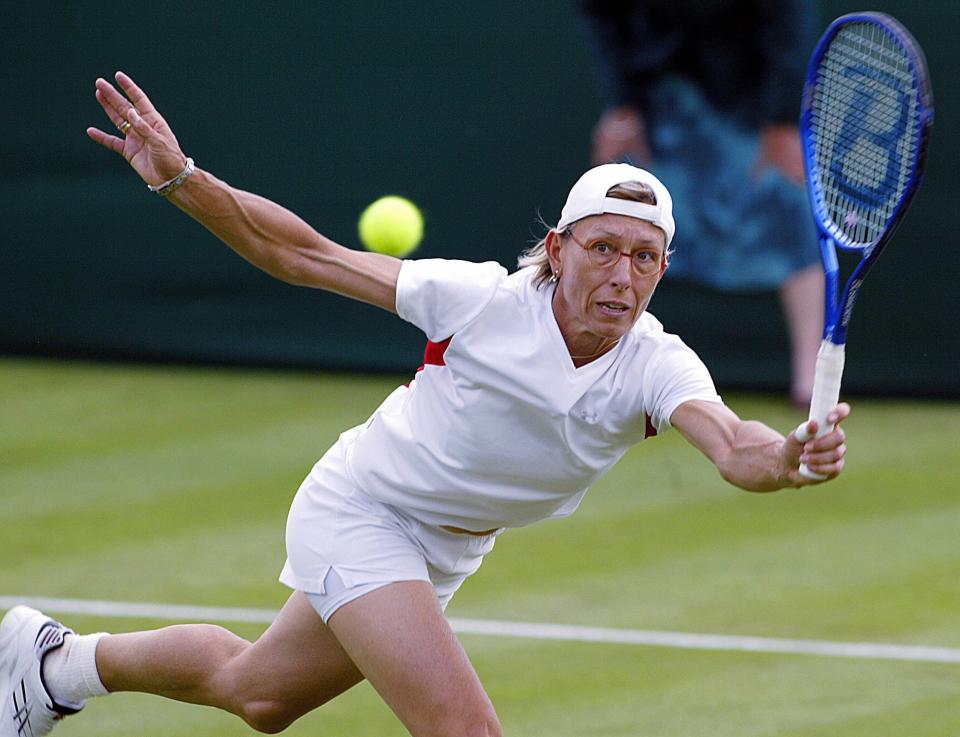Tennis legend Martina Navratilova suffering from two forms of cancer, double cancer diagnosis not uncommon
- Oops!Something went wrong.Please try again later.
- Oops!Something went wrong.Please try again later.
Earlier this month, tennis legend Martina Navratilova announced that she’d recently been diagnosed with two forms of cancer — throat and breast.
“This double whammy is serious but still fixable,” she told the Women’s Tennis Association.
In a statement on her website, the 59-time Grand Slam champion gave further details: “I have been diagnosed with stage 1 throat cancer. The prognosis is good and I will start her treatment this month. The cancer type is HPV and this particular type responds really well to treatment.”
She goes on to explain “I noticed an enlarged lymph node in [my] neck during the WTA finals in Fort Worth [in November]. When it didn’t go down, a biopsy was performed, the results came back as Stage 1 throat cancer.”
Concurrent to the throat-cancer testing, she explained “a suspicious form was found in [my] breast, which was subsequently diagnosed as cancer, completely unrelated to the throat cancer.”
This is Navratilova’s second bout with breast cancer: Her first was in 2010.
She is however optimistic about her prognosis: “Both these cancers are in their early stages with great outcomes.”
However, her treatment schedule will prevent the 66-year-old longtime Tennis Channel commentator from covering the Australian Open, which started on Sunday. She left open the possibility, though, of joining her Tennis Channel colleagues periodically via Zoom.
Double cancer diagnosis not uncommon

According to Johns Hopkins University oncology professor Dr. Otis Brawley, patients having to treat two cancers simultaneously is not terribly rare. “It is not uncommon for two cancers to be diagnosed in people at the same time,” he told CNN. “Some cancers grow very, very slowly. And sometimes, people will go to the doctor because they have symptoms for one cancer, and the doctor, being thorough, looks for other things and finds something else.”
Brawley said that the primary complication for Navratilova will be coordination between her separate sets of oncology teams.
“You get your breast surgeons and your breast radiation oncologist and your breast medical oncologist, and they treat the breast cancer, and then you get the head-neck oncologists, including the radiation oncologist and the head-neck medical oncologist, and they treat the head and neck cancer,” he said. “Now, those two groups of people are going to have to talk to each other, and they’re going to have to work to coordinate with each other. But you don’t treat the patient differently other than that coordination.”
Fortunately for Navratilova, not only is her prognosis encouraging, but she also knows how to manage a “team” — something she first started doing more than 40 years ago when she transformed how female athletes approached training and conditioning.
Martina Navratilova as a fitness pioneer
While Navratilova is largely credited with bringing fitness and strength-training to female sports, her journey did not begin that way.
In 1975, during the U.S. Open, she officially defected to America from her native Czech Republic at age 18.
Her immense tennis talent and athleticism were always apparent. But like so many teenagers before her, once introduced to America’s burgeoning fast-food offerings, she became enamored.
Such a diet had the predictably deleterious effects on her game and physique. At one point, her 5-foot, 8-inch frame ballooned to nearly 170 pounds — which led to famed tennis writer and commentator Bud Collins cruelly dubbing her the “Great Wide Hope.”
By the late 1970s, Navratilova had established herself as one of the world’s top players — but her legendary rivalry with Chris Evert was still mostly one-sided, with the latter capturing 20 of their first 25 head-to-head matchups.
Navratilova was in better shape than she was as a teenager but still had not reached her physical peak.
From 1978-81, she and Evert traded victories, with neither gaining a decisive upper hand.
Navratilova’s fateful meeting with fellow legend Nancy Lieberman

Following what appeared to be Navratilova’s nadir — a 6-0, 6-0 defeat to Evert at Amelia Island, S.C. in 1981 — she met the woman who would help set her on her legendary path: Nancy Lieberman, arguably then the world’s top female basketball player.
In short order, Lieberman convinced Navratilova to get serious about maximizing her physical gifts and competitive will.
This is when Navratilova and Lieberman began assembling her team: tennis coaches Renee Richards and later Mike Estep; nutritionist Robert Haas; reflex trainer Rick Elstein.
Such an approach — which is now de rigueur in professional tennis — was unheard-of back then.
The changes in Navratilova’s body and game came quickly. During one stretch from 1982 to 1984, she beat Evert 13 consecutive times.
From 1982 to 1986 she dominated women's tennis ― winning 12 of her 18 career Grand Slam singles titles and earning the WTA Player of the Year honor every year during that stretch.
As Navratilova told The New York Times in 1984 about her famed training regimen and what it meant for female sports “they can all do the things I do, they can go out there and run on the track, they can go and lift weights. They can go and play basketball, full-court one-on-one, for an hour to get in shape, they can eat the right foods and practice three or four hours a day, they can do all those things. There is not anything that I do that anybody else cannot do.”
In the same article, Haas explained that Navratilova ''is programmed to get the most out of her body … [and] wants to be the most conditioned woman on the tour and in all of women's athletics.''
What Navratilova introduced to women’s tennis — and really all of women’s sports — were the undeniable benefits of strength- and fitness training.
And that not only was there nothing wrong with being strong and muscular — but that being so could actually be beneficial in the competitive arena.
Navratilova’s dedication to training also led to her legendary longevity.
Long before Tom Brady was showing the world it was possible to remain elite in one's sport into one's mid-40s, Navratilova had already done so: She notched her 59th and final Grand Slam title — the 2006 U.S. Open mixed doubles championship — a month shy of turning 50.
As the 2023 tennis season commences, tennis fans will certainly miss Navratilova's engaging personality and cogent commentary during Tennis Channel broadcasts — but they'll no doubt be united in sending her good thoughts for a quick and full DOUBLE recovery.
This article originally appeared on Palm Beach Post: Tennis legend Martina Mavratilova diagnosed with two forms of cancer

